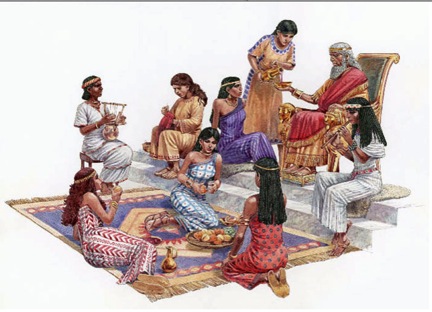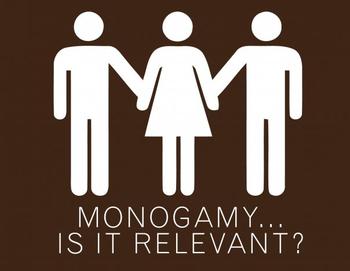 In 1 Kings 11, verse 3, we read that Solomon, the king who ruled at the pinnacle of Israelite power, had 700 wives and 300 concubines. Other great men of the Old Testament also had more than one wife. Are we to conclude that God encourages polygamy?
In 1 Kings 11, verse 3, we read that Solomon, the king who ruled at the pinnacle of Israelite power, had 700 wives and 300 concubines. Other great men of the Old Testament also had more than one wife. Are we to conclude that God encourages polygamy?
Norman Geisler and Thomas Howe, in When Critics Ask: A Popular Handbook on Bible Difficulties, argue that the Bible unequivocally teaches that monogamy is God’s standard for the human race.
This is clear from the following facts: (1) From the very beginning God set the pattern by creating a monogamous marriage relationship with one man and one woman, Adam and Eve (Gen. 1:27; 2:21–25). (2) Following from this God-established example of one woman for one man, this was the general practice of the human race (Gen. 4:1) until interrupted by sin (Gen. 4:23). (3) The Law of Moses clearly commands, ‘You shall not multiply wives’ (Deut. 17:17). (4) The warning against polygamy is repeated in the very passage where it numbers Solomon’s many wives (1 Kings 11:2), warning ‘You shall not intermarry with them, nor they with you.’ (5) Our Lord reaffirmed God’s original intention by citing this passage (Matt. 19:4) and noting that God created one ‘male and [one] female’ and joined them in marriage. (6) The NT stresses that ‘Each man [should] have his own wife, and let each woman have her own husband’ (1 Cor. 7:2). (7) Likewise, Paul insisted that a church leader should be ‘the husband of one wife’ (1 Tim. 3:2, 12). (8) Indeed, monogamous marriage is a prefiguration of the relation between Christ and His bride, the church (Eph. 5:31–32).
How do the biblical texts treat the practice of polygamy?
Polygamy was never established by God for any people under any circumstances. In fact, the Bible reveals that God severely punished those who practiced it, as is evidenced by the following: (1) Polygamy is first mentioned in the context of a sinful society in rebellion against God where the murderer ‘Lamech took for himself two wives’ (Gen. 4:19, 23). (2) God repeatedly warned polygamists of the consequences of their actions ‘lest his heart turn away’ from God (Deut. 17:17; cf. 1 Kings 11:2). (3) God never commanded polygamy—like divorce, He only permitted it because of the hardness of their hearts (Deut. 24:1; Matt. 19:8). (4) Every polygamist in the Bible, including David and Solomon (1 Chron. 14:3), paid dearly for his sins. (5) God hates polygamy, as He hates divorce, since it destroys His ideal for the family (cf. Mal. 2:16).
Geisler and Howe summarize the argument for monogamy:
In brief, monogamy is taught in the Bible in several ways: (1) by precedent, since God gave the first man only one wife; (2) by proportion, since the amount of males and females God brings into the world are about equal; (3) by precept, since both OT and NT command it (see verses above); (4) by punishment, since God punished those who violated His standard (1 Kings 11:2); and, (5) by prefiguration, since marriage is a typology of Christ and His bride, the church (Eph. 5:31–32). Simply because the Bible records Solomon’s sin of polygamy does not mean that God approved of it.
 We’ve already seen, from William Tucker, in his book
We’ve already seen, from William Tucker, in his book  William Tucker, the author of
William Tucker, the author of  William Tucker, in his book
William Tucker, in his book  In
In 